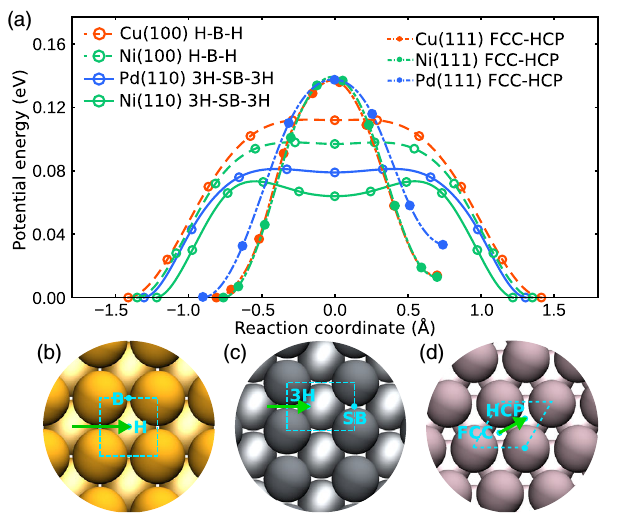PRL: tunnelling on metal surfaces
In collaboration with UCL and Peking University we have described a new type of tunnelling process for H atoms on certain metal surfaces where the potential-energy barrier is broad.

Hydrogen diffusion on metals exhibits rich quantum behavior, which is not yet fully understood. Using simulations, we show that many hydrogen diffusion barriers can be categorized into those with parabolic tops and those with broad tops. With parabolic-top barriers, hydrogen diffusion evolves gradually from classical hopping, to shallow tunneling, to deep tunneling as the temperature (T) decreases, and noticeable quantum effects persist at moderate T. In contrast, with broad-top barriers quantum effects become important only at low T and the classical-to-quantum transition is sharp, at which classical hopping and deep tunneling both occur. This coexistence indicates that more than one mechanism contributes to the quantum reaction rate. The conventional definition of the classical-to-quantum crossover T is invalid for the broad tops, and we give a new definition. Extending this, we propose a model to predict the transition T for broad-top diffusion, providing a general guide for theory and experiment.
Read the text in full: DOI: external page 10.1103/PhysRevLett.119.126001 or for free from external page arXiv:1709.02752